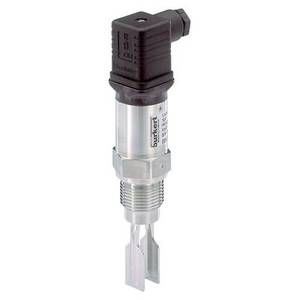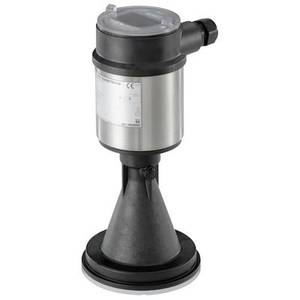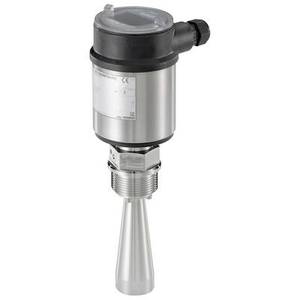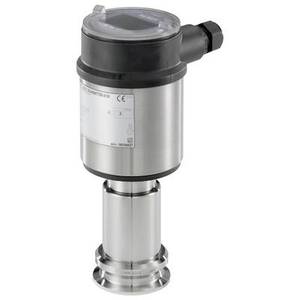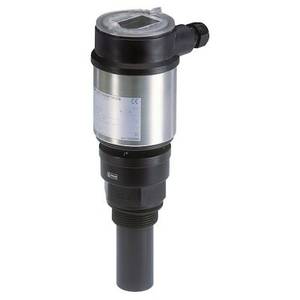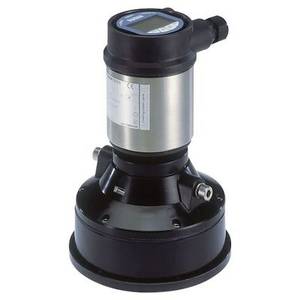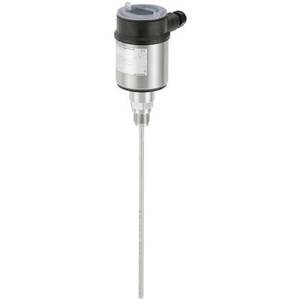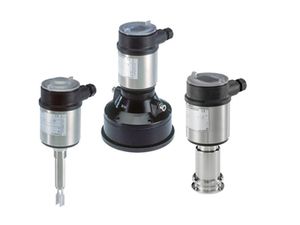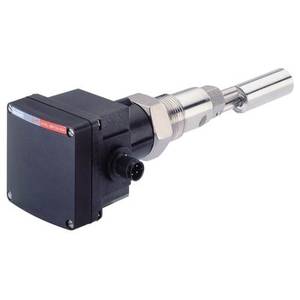Burkert Level transmitter
IN STOCK!!!
Vibrating level switch with tuning fork.
Vibrating level switch for limited spaces with tuning fork. For all industrial use.
Technological processes in the modern world require frequent measurements of the volume of fuel materials, filling with water and other liquid substances. To control the filling of any container with liquid in automatic mode, a liquid level sensor is used. Next, we will look at the main types of Burkert level sensors and what the principle of their operation is based on.
Radar sensors
The principle of radar level sensor operation is based on measuring the propagation time of a radio wave from the level sensor antenna to the surface of the product, the level of which is measured, and back. Radar transducer emits radio waves in a narrow range, the receiver catches the reflected signal and determines the capacity of the tank by its delay time.
The most common method is FMCW (Frequency Modulated Continuous-Wave). With this method, the emitted and reflected signals are mixed, and a signal is formed, the frequency of which is equal to the difference in the frequencies of these signals. This difference is proportional to the distance from the antenna to the surface.
Ultrasonic sensors
The principle of Burkert ultrasonic transducers operation is based on the emission of a sound wave in the ultrasonic range. The wave leaves the emitter, is reflected from the surface of the substance, and returns to the receiver. In calculating the level of a substance (bulk materials, liquid), the flight time of an acoustic wave is fundamental. An ultrasonic device calculates the distance to a substance based on the measurement of the time from transmission to reception of a signal and the speed of sound in the medium.
Like all sensors that measure the level of the product, ultrasonic is divided into two types -
- level gauges and
- signaling devices.
The difference between the two types is that the level transmitter outputs an analog signal, while the signaling device produces a discrete signal. Level gauges are designed for continuous monitoring of the level of liquid or bulk materials, measuring their volume and weight. Signaling devices are used to monitor the limit values of the level of a substance at one or more given points.
Tuning fork sensors
The principle of operation of the tuning fork Burkert sensor is in a piezoelectric crystal, which excites oscillatory movements of the desired frequency, transmitted to an external plug located in a controlled container. When the fork is immersed in some kind of medium, the oscillation frequency deviates from the standard-specified, depending on the density and other properties of the medium. And when the tank is empty, then this frequency remains at its previous level. Thus, to control the level, even in bulk products, measurements of the amplitude of the oscillations are carried out.
The vibration parameters are recorded by the built-in receiver and then transmitted to the amplifier. All occurring changes are tracked by the device itself, and in case of reaching the limits of a given level, the operator is notified by an audible signal. To monitor the frequency deviation, a microprocessor is used, which generates a control signal for the relay, with the help of which any other actuators are turned on / off.
Also Burkert producers other types of Level transmitter such as:
- Guided microwave level transducers send special high-frequency pulses through a rod or steel cable. Such units do not require additional regulation for each media.
- Hydrostatic and Hydrostatic DP are devices that analyze levels through pressure. They work with all types of liquids. DP Version has two sensors.
